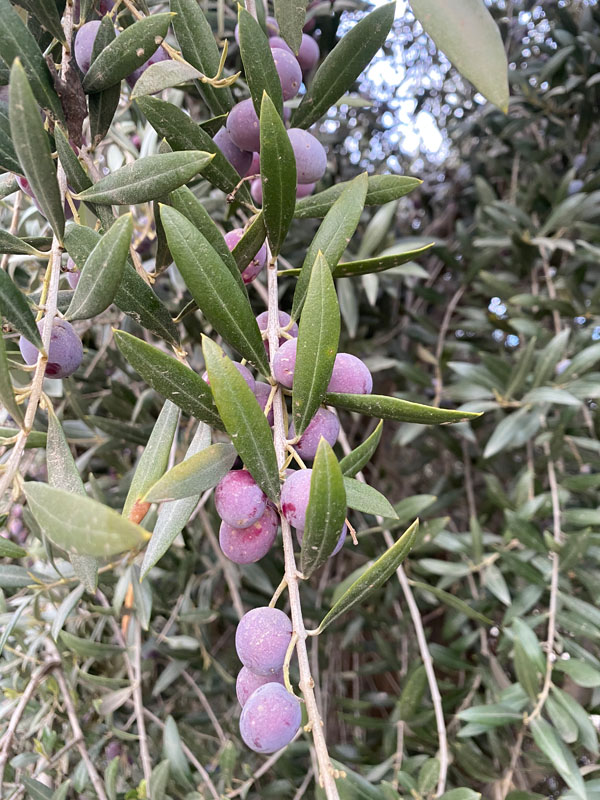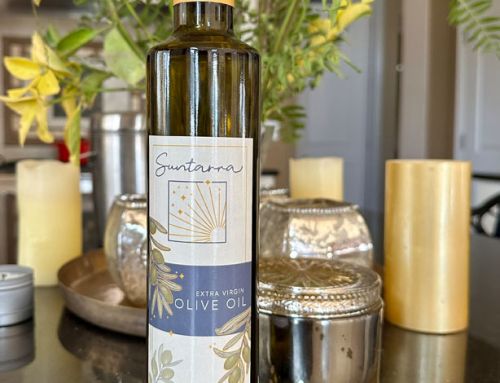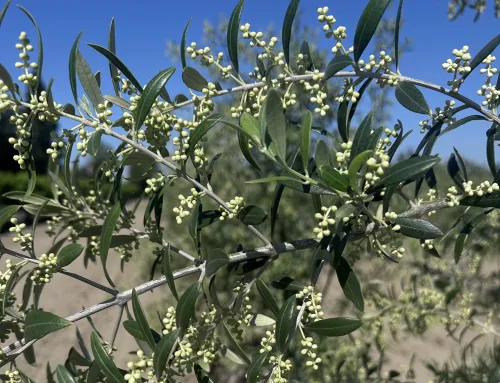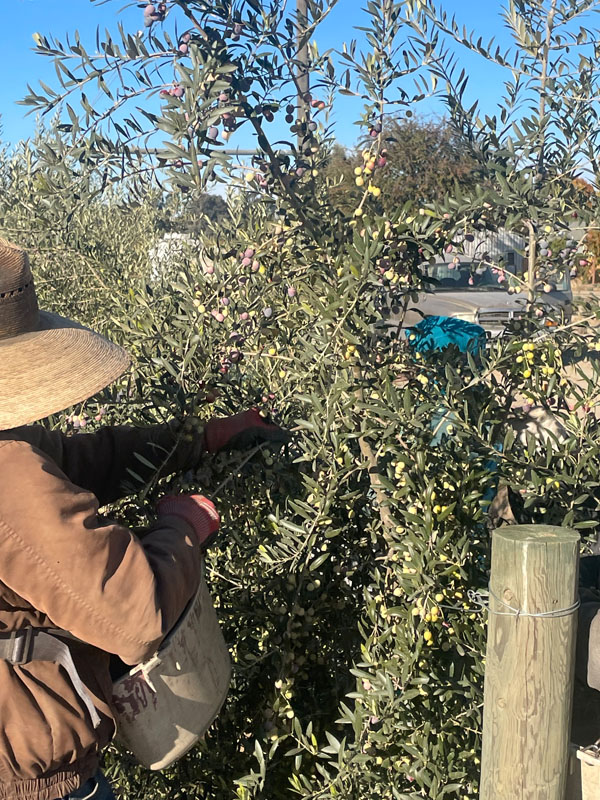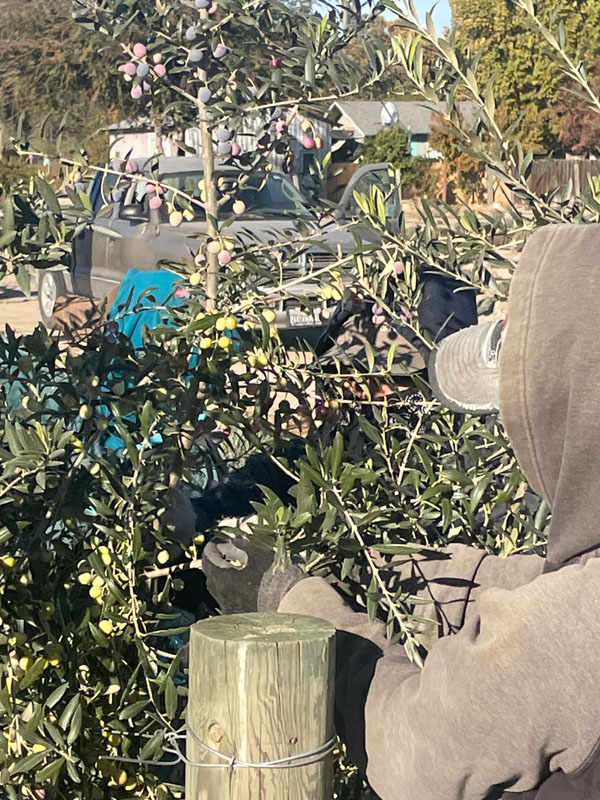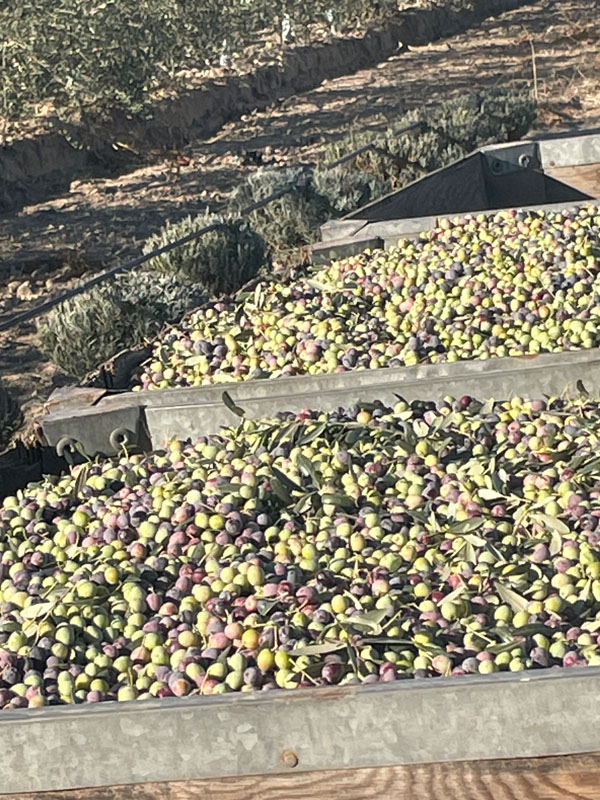TABLE OF CONTENTS
RECENT POSTS
Harvesting Our Olives
Dawn in the Groves
It’s a crisp October dawn in the San Joaquin Valley. A silver mist clings to the olive branches as Harry steps between the rows, boots crunching on dew-kissed earth. This is his season—the moment the year has been building toward. Harvest. The groves hum with anticipation; the ancient trees, some more than a century old, are heavy with fruit waiting to become Suntarra’s signature extra-virgin olive oil.
Reading the Olives — Color, Sheen, and Bite
Harry starts each day of harvest the same way, plucking an olive straight from the branch and rolling it between his fingers. He’s looking for three tell-tale signs:
- Color Shift: A mosaic of jade greens fading into plum-black. The ideal harvest window is when roughly 60–70 % of the olives have “turned.” That blend delivers both grassy brightness and peppery depth in the final oil.
- Skin Sheen: A subtle matte finish replacing the summer gloss—proof the fruit has hit peak oil content.
- Texture Test: He bites softly into the flesh (yes, pits and all). A slight pop signals firm, healthy fruit; too soft and the oil can taste muddy, too hard and it can be thin and bitter.
Harry records his findings in a weather-worn notebook, then gives a quick whistle. It’s the sign his crew has been waiting for.
The People Behind the Pour
Suntarra’s farm hands are more family than staff. There’s Elena, who can spot leaf-curl from twenty yards; Miguel, the “ladder whisperer,” who can place a tripod ladder on a hillside so stable it feels anchored to bedrock; and twins Rosa and Rafa, who race each other down the rows with picking rakes, laughing the whole way. Each brings a unique expertise to the harvest, but they share one mission: safeguard every olive from branch to bin.
The team moves in rhythm—nets unfurl beneath the limbs, pneumatic rakes hum, and olives cascade like marbles into padded baskets. Within minutes, crates fill and head straight to the on-site mill. Speed matters: pressing within 6–8 hours locks in freshness and keeps free-fatty-acid levels ultra-low (below 0.2 %, well inside extra-virgin standards).
Fun Olive Facts to Impress at Your Next Dinner Party
- Liquid Gold Yield: It takes about 1,100 olives—roughly 40 lbs—to produce a single gallon of extra-virgin olive oil.
- Early vs. Late Harvest: Early-harvest (greener) olives create a vibrant, grassy oil rich in polyphenols, while late-harvest (darker) olives yield mellower, butter-smooth flavors.
- Tree Longevity: The oldest known olive tree still producing fruit is over 2,000 years old. Suntarra’s centenarian giants are practically teenagers in olive years!
- Natural Antioxidant Punch: A tablespoon of quality EVOO supplies up to 30 mg of heart-friendly polyphenols.
A Sneak Peek at the Alchemy
Once the fruit reaches the mill, things get wonderfully technical. The olives are washed, leaves whisked away, and the whole fruit is crushed—pits included—into a jade-green paste. Next comes the malaxing phase: slow churning that coaxes micro-droplets of oil to marry and separate. Finally, a state-of-the-art centrifuge spins the mixture, cleanly parting oil from water and solids without a hint of heat or chemicals. Voilà: pure, cold-pressed gold.
(Stay tuned: we’ll dive deep into this process in next month’s “Inside the Mill” post.)
Taste the Season
The very first bottles of Suntarra’s 2025 Harvest Extra-Virgin Olive Oil are now available in the farm shop and online. Expect notes of fresh cut grass, green almond, and a finishing kick of black pepper—the flavor of autumn mornings, laughter in the groves, and a century of valley sunshine distilled into every drop.
Bring home a bottle, drizzle generously, and join us in celebrating another beautiful harvest.
Ready to taste the freshness? Visit the farm or order online today—your kitchen (and your heart) will thank you.

